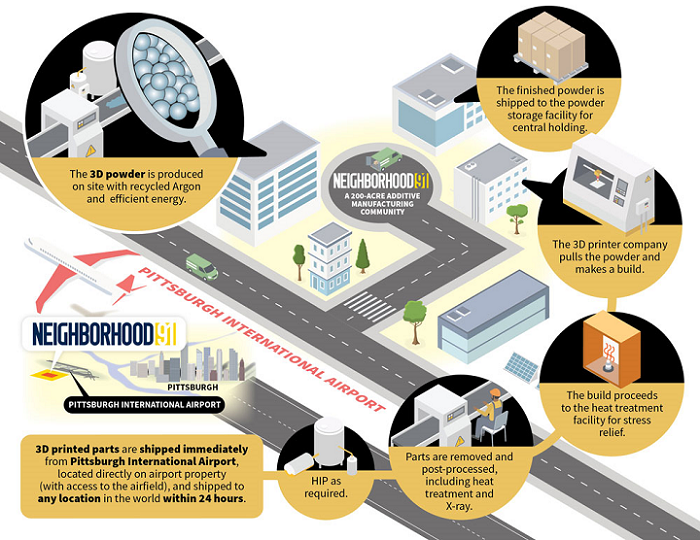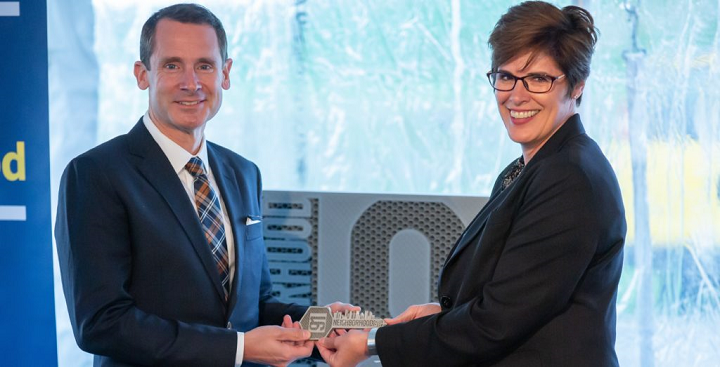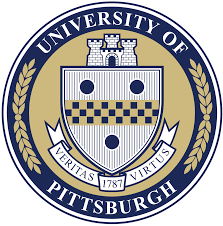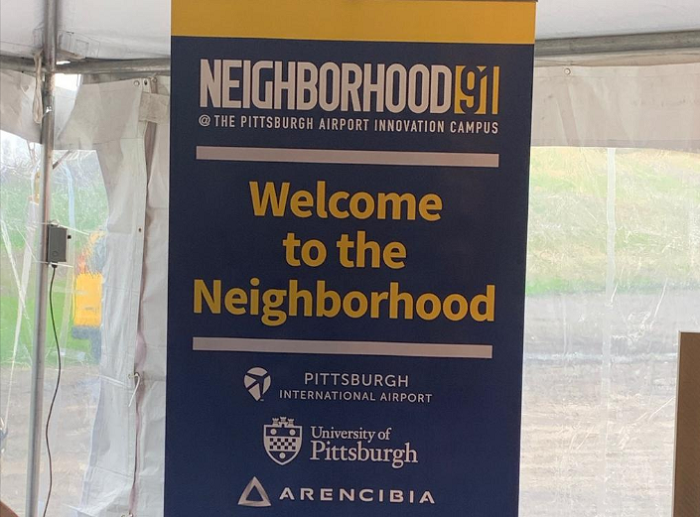 There are many 3D printing clusters around the world, specializing in areas like 3D bioprinting and research. But we’ve never seen one that includes all the elements of the AM supply chain in a single space – until now. The Pittsburgh International Airport, managed by the Allegheny County Airport Authority, has just introduced its innovative 3D printing epicenter. Neighborhood 91, developed with the University of Pittsburgh, the Barnes Group Advisors (TBGA), and other partners, is a unique cluster strategy focused on making the 3D printing industry profitable and scalable.
There are many 3D printing clusters around the world, specializing in areas like 3D bioprinting and research. But we’ve never seen one that includes all the elements of the AM supply chain in a single space – until now. The Pittsburgh International Airport, managed by the Allegheny County Airport Authority, has just introduced its innovative 3D printing epicenter. Neighborhood 91, developed with the University of Pittsburgh, the Barnes Group Advisors (TBGA), and other partners, is a unique cluster strategy focused on making the 3D printing industry profitable and scalable.
“The Pittsburgh region has always been a world leader in manufacturing. Now that industry has evolved into additive manufacturing and 3-D printing, and through Neighborhood 91, we have laid the groundwork to become the global epicenter,” stated Allegheny County Executive Rich Fitzgerald. “The neighborhood concept will create enormous efficiencies but just as important is leveraging our region’s universities, which will provide necessary research and development and fuel the workforce to the fill these jobs.”

Neighborhood 91 will be the first site in the world to contain every element of the AM supply chain, from design to production and distribution. [Graphic by The Barnes Group Advisors]
Pittsburgh International Airport CEO Christina Cassotis said, “Part of our vision as an airport is to advance the region’s role as a world leader. Additive manufacturing is looking for a place to call home and no one has made that happen – until now. The Pittsburgh region is natural fit based on its history and its assets of today. And our airport is leading the way to get it done along with our university partners.”

Pittsburgh International Airport CEO Christina Cassotis hands Arencibia president Joe Arencibia a 3D printed key at an event announcing Arencibia as the first tenant of Neighborhood 91. [Photo by Brian Cook, Blue Sky News]
“The Neighborhood 91 model is innovation at its core: marrying technological, commercial, and public-private collaboration to fundamentally change the industry. This is something that isn’t happening elsewhere and we are excited to be the foundation upon which the Neighborhood is built,” stated company president Joe Arencibia.
Arencibia will anchor a full production ecosystem in Neighborhood 91, including 3D printing powder, parts, post-production, testing, and analysis.
“It’s a great example of when the economies of scale work on both ends. By having a central plant where we process everyone’s gas, our economies of scale are better. And then likewise, smaller additive manufacturing producers who maybe would have normally been too small to take advantage of the gas we recycle, now can participate as a group in a network to actually get the benefits of it and become a lot more competitive,” Arencibia said.
The concept of Neighborhood 91 is centered around sharing capital resources at the heart of the development process. The campus will place every element of the AM supply chain – including onsite communal powder supply – in one concentrated place. It’s estimated that the cluster will help reduce manufacturing lead times by 80%, and transportation costs by even more.
The cluster will be home to a full end-to-end 3D printing ecosystem, which will include:
- Airport access
- Argon, helium, and other noble gases
- Communal powder storage facilities
- Efficiencies in production, post-production, and delivery
- Powder, parts, testing, and analysis
- Reduced transportation costs
- Tenants’ clients saving money from on-demand printing
“The idea is that the part will never have to leave the campus until it’s ready to go to the customer. Today, the supply chain for additive manufacturing is very fragmented. For example, a part could go from West Virginia to Texas to Michigan to Canada before being shipped to a customer overseas,” said John Barnes, founder and director of The Barnes Group Advisors.
 Because of its R&D and workforce development, along with piloting programs to help improve the professional pipeline and applied additive manufacturing research, the University of Pittsburgh has been a very important partner in developing the Neighborhood 91 ecosystem.
Because of its R&D and workforce development, along with piloting programs to help improve the professional pipeline and applied additive manufacturing research, the University of Pittsburgh has been a very important partner in developing the Neighborhood 91 ecosystem.
University of Pittsburgh Chancellor Patrick Gallagher said, “Neighborhood 91 brings together the kind of collaborative environment needed to lead in today’s competitive advanced manufacturing economy. It combines the region’s strength in additive manufacturing and advanced materials industries with the intellectual capital of its world-class research universities.”
Who knows – if Neighborhood 91 performs well, we could be seeing more of these all-in-one clusters popping up in the future.
Discuss this story and other 3D printing topics at 3DPrintBoard.com or share your thoughts in the Facebook comments below.
Subscribe to Our Email Newsletter
Stay up-to-date on all the latest news from the 3D printing industry and receive information and offers from third party vendors.
Print Services
Upload your 3D Models and get them printed quickly and efficiently.
You May Also Like
Reinventing Reindustrialization: Why NAVWAR Project Manager Spencer Koroly Invented a Made-in-America 3D Printer
It has become virtually impossible to regularly follow additive manufacturing (AM) industry news and not stumble across the term “defense industrial base” (DIB), a concept encompassing all the many diverse...
Inside The Barnes Global Advisors’ Vision for a Stronger AM Ecosystem
As additive manufacturing (AM) continues to revolutionize the industrial landscape, Pittsburgh-based consultancy The Barnes Global Advisors (TBGA) is helping shape what that future looks like. As the largest independent AM...
Ruggedized: How USMC Innovation Officer Matt Pine Navigates 3D Printing in the Military
Disclaimer: Matt Pine’s views are not the views of the Department of Defense nor the U.S. Marine Corps Throughout this decade thus far, the military’s adoption of additive manufacturing (AM)...
U.S. Congress Calls Out 3D Printing in Proposal for Commercial Reserve Manufacturing Network
Last week, the U.S. House of Representatives’ Appropriations Committee moved the FY 2026 defense bill forward to the House floor. Included in the legislation is a $131 million proposal for...


































